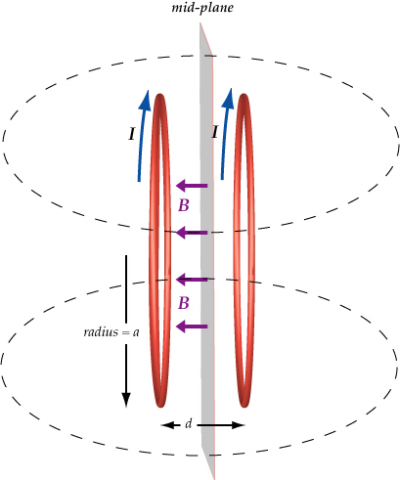 On the 3rd day of Christmas my true love sent to me: 3 Helmholtz coils…
On the 3rd day of Christmas my true love sent to me: 3 Helmholtz coils…
If you’re trying to measure the often rather weak magnetisation of rock sample, the last thing you need is other magnetic fields invading your measurement space and mucking up your readings. To avoid this, the magnetometer is placed in a magnetically shielded space. One method of doing this is to build a shielded room with walls made out of a material with high magnetic permeability, such as Mu-metal or transformer steel, that absorbs most of the magnetic flux before it encroaches inside. However, cost or space issues sometimes make this impractical.
An alternative is to generate your own magnetic field around the magnetometer, such that it cancels out the ambient field in your lab. For this to be effective, you need to have a set-up that will generate a uniform cancellation field within a volume large enough to fit your measuring equipment, which means that you employ paired Helmoltz coils. With the right separation, if you run a current around the coils a uniform axial magnetic field is created in the region between the coils.
In order to cancel out the ambient magnetic field completely, therefore, you need three pairs of Helmholtz coils, nested within and oriented perpendicular to each other. If you’re feeling fancy, you can even set up an active control system that will automatically account for changes in the ambient field: both natural changes due magnetic fields of the sun and moon, and the solar wind, interacting with Earth’s magnetosphere, and unnatural ones due to lorries parking outside your lab, cars moving past, or those crazy physicists down the hall.
With such a control system in place, most of the time you can reduce the magnetic field inside the coils from around 50,000 nano-tesla to less than 50 nano-tesla, which is just as good as being inside a mu-metal box. However, it is a slightly less stable low field environment, because rapid fluctuations in the field will sometimes occur too fast to be corrected for. My last two laboratories had magnetometers in shielded rooms, whilst my current laboratory in Edinburgh has a set of Helmholtz coils; so over the next few months I’ll be able to check their relative effectiveness for myself.





Comments (1)